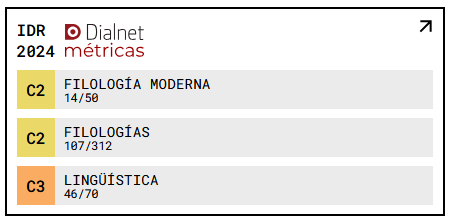Wolves, sheep and "vatos locos" : reflections of gang activity in Chicano literature
DOI:
https://doi.org/10.18172/jes.90Abstract
The difficult social and economical reality of many barrios in the city of Los Angeles, and the outgrowing anger provoked by this situation in many Chicano youngsters, has resulted in the emergence of a strong gang activity. Violence, crime and a deep sense of frustration lead the lives of the members of these groups, who, in an attempt to fight a system that does not count on them, choose to live the dark side of life. The gang, albeit its highly hierarchical system of organization, becomes the safe haven in which these angry young Chicanos seek for shelter and protection, in an often self-destructive way. Always Running (1993) by Luis J. Rodriguez and Locas (1997), by Yxta Maya Murray, expose the extreme and harsh existence of Chicano gangs, its internal and external fights for power, and the subsequent fatal consequences that these often provoke upon its members. The different visions of gang life, symbolized by their male and female protagonists, respectively, offer a rough, though extremely human vision of the dark side of the barrio.Downloads
References
Campbell, A. 1991 (1984). The Girls in the Gang. Cambridge, MA: Basil Blackwell.
Murray, Y. M. 1997. Locas. New York: Groove Press.
Rodríguez, L. J. 1993. Always Running. La Vida Loca: Gang Days in L.A. New York, London: Touchstone.
Sánchez Jankwoski, M. 1991. Islands in the Streets. Gangs and American Urban Society. Berkeley: University of California Press.
Tottem, M. D. 2000. Guys, Gangs & Girlfriend Abuse. Ontario: Broadview Press.
Vigil, D. 1993. “The Established Gang”. Gangs. The Origin and Impact of Contemporary Youth Gangs in the United States. Eds. Cummints, S., and D. J. Monti. Albany: State University of New York. 95-112.
Downloads
Published
How to Cite
Issue
Section
License
The authors retain copyright of articles and authorize Journal of English Studies the first publication. They are free to share, redistribute, and/or reprint the article without obtaining permission from the publisher as long as they give appropriate credit to the editor and the journal.
Self-archiving is allowed too. In fact, it is recommendable to deposit a PDF version of the paper in academic and/or institutional repositories.
It is recommended to include the DOI number.
This journal is licensed under a Creative Commons Attribution 4.0 International License














